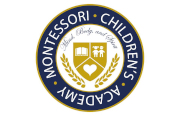The first Montessori school opened its doors more than 100 years ago, and the rest was history. Find out how a single institution led to a worldwide movement.
1911 – Montessori Comes to the U.S.
By 1911, word has spread overseas. Montessori is gaining popularity in America and the first school opens in Scarborough, New York. Dr. Montessori travels to the U.S., giving lectures that draw large crowds. In 1915, she is invited to showcase her method at the Panama-Pacific International Exposition in San Francisco. This fuels more American interest, and more than 100 Montessori schools open in the U.S. by 1916.
1950 – Nancy McCormick Rambusch Revives Montessori in the U.S.
In the early 1920s, Montessori loses steam in the U.S.. Language barriers, World War I restrictions, anti-immigrant sentiment, and criticism from influential educators like William Kilpatrick contribute to the movement’s fading popularity. By the 1950s, a renewed interest emerges thanks to educator Nancy McCormick Rambusch. Rambusch devotes herself to Dr. Montessori’s method and sees new ways to utilize it in American schools. In 1960, Rambusch founded the American Montessori Societ
Today
Montessori Endures and Expands
Born over a century ago in a single classroom in Rome, Montessori has evolved into a global force. In the U.S., around 5,000 Montessori schools serve over 1 million children. Initiatives like Day One Academies highlight the method’s impact on education. Recognizable figures like NBA MVP Stephen Curry and Google founders Larry Page and Sergey Brin credit Montessori for their success. Today, Montessori classrooms not only endure—they expand, catering to diverse needs, including bilingual, faith-based, and inclusive programs.
What are the benefits of a Montessori education?
Montessori education is for individually paced learning and fostering independence, the Montessori Method also encourages empathy, a passion for social justice, and a joy in lifelong learning.
Given the freedom and support to question, probe deeply, and make connections, Montessori students become confident, enthusiastic, self-directed learners. They can think critically, work collaboratively, and act boldly—a skill set for the 21st century.
Source: The American Montessori Society

Leave a Reply